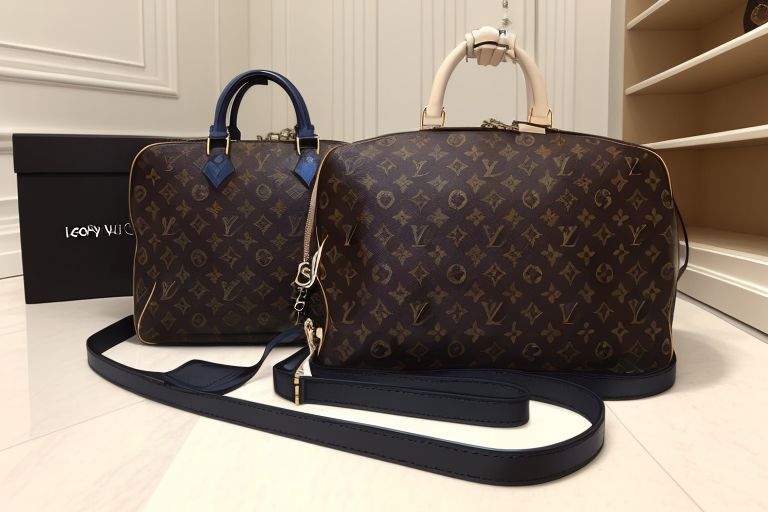
CHANEL, a name synonymous with elegance, sophistication, and innovation, has carved an indelible mark in the annals of fashion history. Established in 1910 by the iconic Gabrielle Bonheur “Coco” CHANEL in Paris, the brand has evolved from a modest milliner’s shop to a global powerhouse, representing an entire ethos of style and luxury that continues to inspire designers and fashion enthusiasts alike.
The Visionary Behind the Brand
Coco CHANEL is more than just a designer; she is a cultural icon who revolutionized women’s fashion in the early 20th century. Born into modest beginnings, Coco’s perspective on fashion was shaped by her desire for both aesthetic beauty and practical comfort. In a time when women were restricted by corsets and extravagant garments, she championed a more liberated, yet elegant silhouette. The introduction of the “little black dress” (LBD) and the use of jersey fabric were manifestations of her vision to create clothing that celebrated simplicity and the female form. Notably, the LBD has since become an essential piece in every woman’s wardrobe, epitomizing versatility and chicness.
Signature Elements of CHANEL
At the heart of CHANEL’s enduring appeal lies a collection of signature elements that defines its aesthetic. The interlocking “CC” monogram, the Chanel No. 5 perfume, tweed suits, and the classic quilted handbag are just a few hallmarks of the brand.
The Chanel No. 5 perfume, launched in 1921, marked a pivotal moment in the fragrance industry as it was the first perfume to be marketed as an accessory. With its abstract and complex scent composition, Chanel No. 5 transcends mere aroma to symbolize sophistication and allure, an extension of the CHANEL lifestyle.
The iconic CHANEL tweed jacket represents the inspirational fusion of femininity and strength, encapsulating the essence of CHANEL’s vision for women’s fashion. The use of tweed—a fabric traditionally associated with menswear—demonstrated Coco’s revolutionary approach, challenging societal norms and allowing women to express power and elegance simultaneously. This design continues to influence contemporary fashion, with various designers drawing inspiration from its classic structure and texture.
Moreover, the classic Chanel 2.55 handbag, launched in 1955, has remained a coveted accessory, distinguished by its quilted design and gold chain. The handbag’s functionality, coupled with its status as a luxury item, reflects CHANEL’s commitment to creating pieces that balance practicality with sophisticated style.
The Concept of Elegance and Modernism
CHANEL’s philosophy transcends mere aesthetics; it embodies a broader cultural movement toward modernism and liberation. Coco CHANEL famously asserted, “Fashion fades, style is eternal,” encapsulating the idea that true elegance lies not in the fleeting trends of the fashion world but in a timeless sense of individuality and self-expression. CHANEL’s designs foster an identity that empowers women to embrace their style while reflecting their personalities and lifestyles.
During the interwar period, CHANEL played an instrumental role in redefining the archetype of femininity. The brand rejected opulent and constrictive fashions, choosing instead to promote a sportier and more casual elegance that mirrored the changing roles of women within society. This shift contributed to the larger narrative of gender roles in the early 20th century, where women began to assert their independence in various facets of life, including fashion.
Legacy and Influence
Following Coco CHANEL’s passing in 1971, CHANEL’s legacy endured through the stewardship of subsequent creative directors, such as Karl Lagerfeld and, more recently, Virginie Viard. Each designer has honored the brand’s heritage while infusing it with modern sensibilities. Lagerfeld, known for his boundary-pushing vision, expanded CHANEL’s global footprint through innovative marketing and jaw-dropping runway shows. His ability to blend haute couture with pop culture made CHANEL not only a fashion statement but also a symbol of contemporary art and lifestyle.
Today, CHANEL remains a pillar of the fashion industry, a coveted brand steeped in history yet always progressing. The ongoing relevance of CHANEL, illustrated by its monumental presence at global fashion weeks and unwavering popularity among celebrities, is a testament to its status as an enduring force. The brand’s ability to maintain its luxury appeal while evolving with the times is a meticulous balancing act that embodies Coco CHANEL’s spirit of innovation.

Sustainability and the Future of CHANEL
As the fashion landscape increasingly shifts towards sustainability, CHANEL is now faced with the challenge of remaining relevant while embracing eco-friendly practices. The brand has taken steps to incorporate more sustainable materials and processes into its production, recognizing the importance of environmental stewardship in modern luxury. By focusing on craftsmanship, longevity, and the ethical sourcing of materials, CHANEL aspires to align itself with a new generation of consumers who prioritize sustainability alongside style.
CHANEL, with its rich heritage and commitment to elegance, continues to inspire and redefine the world of fashion. From Coco CHANEL’s visionary designs to the modern interpretations seen on the runway today, the brand stands as a testament to the enduring nature of true style. As we look to the future, CHANEL’s ability to meld innovation with its storied past will ensure that it remains an emblem of luxury and sophistication for generations to come. The brand is not merely a name; it is a multifaceted narrative of empowerment, creativity, and timeless elegance that celebrates the spirit of womanhood in all its forms.






